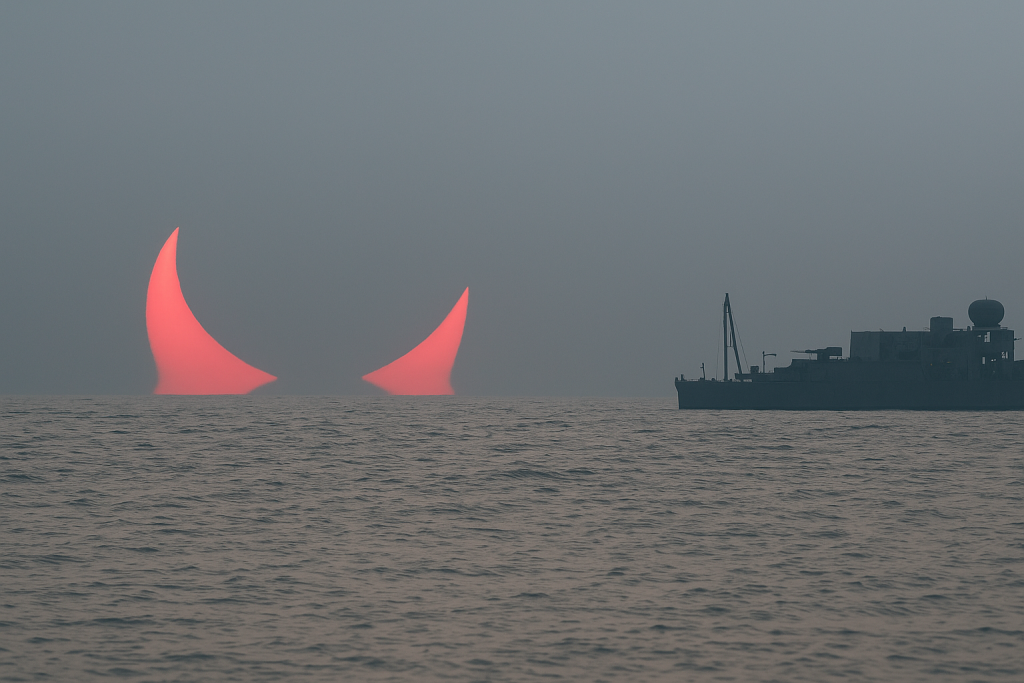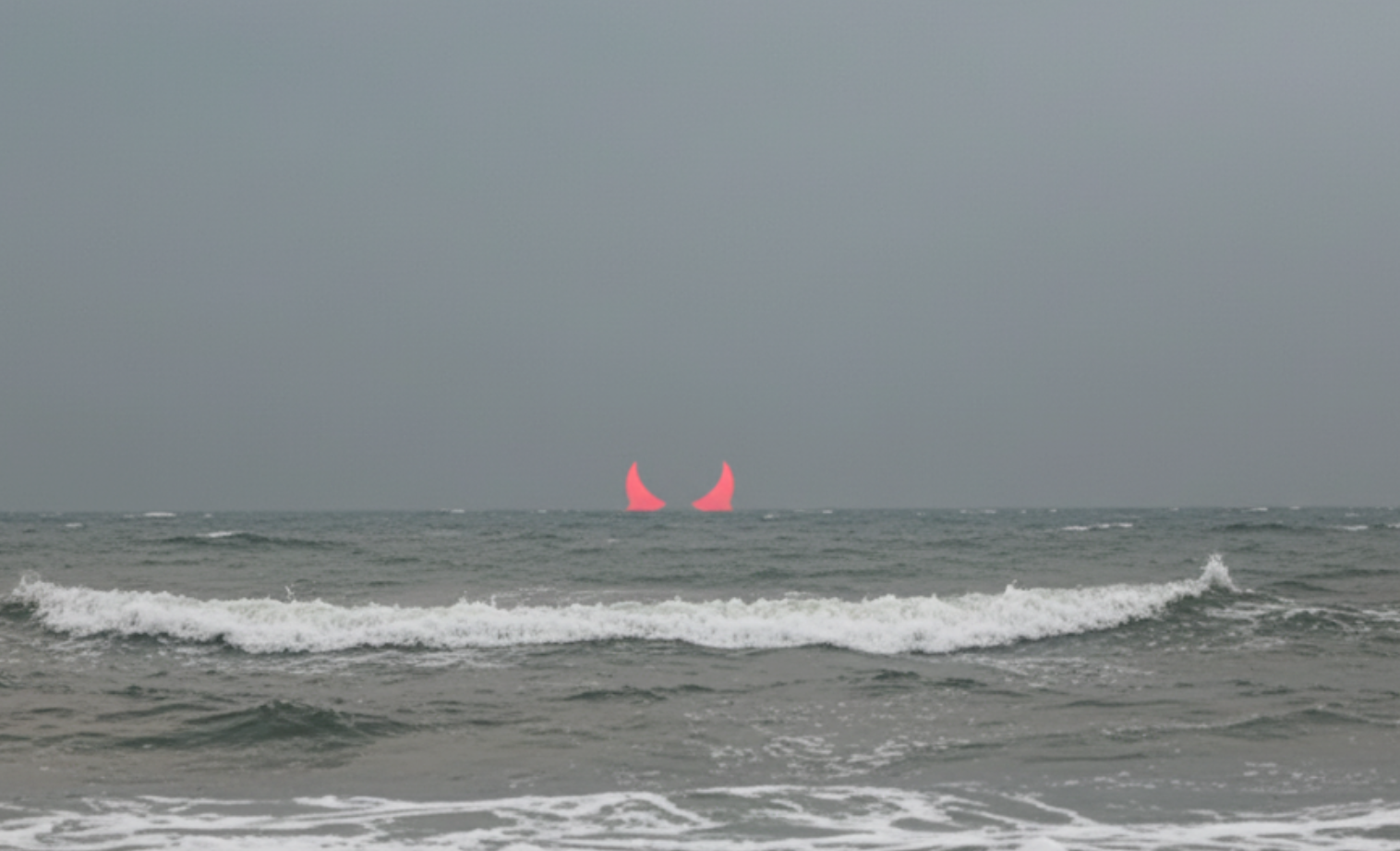
New Zealand Solar Eclipse 2025 – Watch for a Devil’s Horns
A partial solar eclipse will occur on 21 September 2025 (UTC). Because of New Zealand’s position relative to the International Date Line, people in NZ will see this eclipse at sunrise on 22 September 2025 NZST. And the New Zealand Solar Eclipse 2025 may have a big chance to appear as a Devil’s Horns.
Will The “Devil’s Horns” Phenomenon occur in New Zealand?
The “Devil’s Horns” (or “horned sun”) effect happens when the eclipse begins very near sunrise (or ends near sunset), and the Moon covers the upper part of the Sun, leaving two bright “horns” of the Sun’s rim on either side.
Because in New Zealand the eclipse begins exactly around sunrise on 22 September NZST, the conditions are favourable for seeing a “Devil’s Horns” effect — the Sun will rise already partially eclipsed.
Key Times for New Zealand Solar Eclipse 2025, Possibly a Devil’s Horns
Here are the times you’ll want to mark on your clock if you’re in New Zealand (NZST / UTC +12):
Event
Time NZST
Equivalent UTC
Eclipse begins (partial) in NZ
~ 05:41 AM NZST, 22 September 2025
~ 17:41 UTC, 21 September 2025
Eclipse reaches maximum in NZ
This happens shortly after sunrise (exact timing depends on location)
—
Eclipse ends (partial) in NZ
~ 08:36 AM NZST
~ 20:36 UTC, 21 September 2025
The very first glimpse of the eclipse will occur at sunrise in New Zealand, which is when the “Devil’s Horns” shape is most pronounced.
After sunrise, as the Sun climbs higher, the horns will change shape, the crescents will narrow, and eventually the Moon moves off the face of the Sun.

See more: Solar Eclipse 2025 : Partial Eclipse on September 21–22
Where in New Zealand to Watch The Devil’s Horn Solar Eclipse Best?
i. Any place with a clear eastern horizon (where you can see the Sun rising over hills, sea, or flat land) will be ideal.
ii. Coastal regions or places without tall buildings or trees blocking the eastern sky will give you the best view of the horns.
iii. If you’re farther inland with obstructions (trees, buildings, hills), those may block the lowest part of the rising Sun, making the horns less visible.
How to Photograph or Capture the Devil’s Horns in New Zealand?
If you want photos or video, here are instructions and tips so everyone in NZ can try safely:
Get the right gear
Solar eclipse glasses (safety rated) for viewing.
Camera with manual exposure control, or a phone with a good camera app.
Tripod to stabilize your camera.
If possible, a solar filter for your camera lens (especially important if you’re using a DSLR, mirrorless, or a telephoto lens).
Camera settings suggestions
Use a fast shutter speed (e.g. 1/500 sec or faster), since even though partial eclipse light is dimmer, during sunrise there’s often glare.
Moderate to small aperture (e.g. f/8–f/16) to get a decent depth of field.
Adjust ISO so image isn’t underexposed but also not too noisy — maybe ISO 200-400 to start with, adjust as you see what the conditions are.
If using a zoom or telephoto lens, use focal length that captures the Sun reasonably large but still include some horizon for context.
Timing strategy
The moment when the Sun first appears above the horizon already partially covered by the Moon is when the “Devil’s Horns” is clearest. That will be at or just after sunrise in your location (~05:41 AM NZST).
Photograph over the next few minutes as the Sun rises — the horns will slowly “close” as more of the Sun becomes visible.
Safety
Never look directly at the Sun without certified solar viewing glasses. Even a sliver of uncovered Sun can damage your eyes.
Don’t rely on sunglasses.
If using a viewfinder (especially optical viewfinder), use a solar filter so you don’t hurt your eyes.
For cameras or phones, don’t point them at the Sun without proper filters — sensor damage is possible.
Check more Eclipses at Eclipse Page
What to Expect Visually during the Partial Solar Eclipse in New Zealand?
At around sunrise (~05:41 AM NZST), the Sun will appear already partly obscured by the Moon — hence the “horned” shape.
The “horns” will be sharp early on; as the Sun rises, the light brightens, and the horns will reduce in prominence.
By mid-eclipse (just after sunrise), the Moon still covers part of the Sun but the horns might be less dramatic.
After the peak, the eclipse wanes and the Sun returns to its normal disc.
In Summary of the whole Phenomena in New Zealand
For those in New Zealand:
Wake up early on Sunday, 22 September 2025.
Be ready by ~05:30 AM NZST, looking east at the horizon.
The eclipse begins about 05:41 AM NZST, with the chance to see the “Devil’s Horns” right at sunrise.
Make sure you’ve got solar-safe viewing gear or the right camera setup.
If you follow these steps, you have a good chance to witness and/or capture the dramatic “Devil’s Horns” partial eclipse. It’s a rare opportunity!
Data Source: Time and Date